Abstract
Previous workers had identified the vomeronasal organ, on anatomical evidence, as an accessory olfactory organ, present in most terrestrial vertebrates. Lesion experiments had demonstrated its importance in sexual behaviour in the hamster. Howevever, the sequestered position of the vomeronasal receptor epithelium within the organ raised questions concerning the access of olfactory stimuli. Using electrophysiological and pharmacological methods we have now demonstrated the following. 1. A pumping mechanism exists, powered by vasomotor movements, which can suck stimulus substances into the vonmeronasal organ. 2. A mechanism also exists for the active expulsion of the contents of the vomeronasal organ. 3. These mechanisms are activated by fibres running in the nasopalatine nerve. 4. The suction mechanism is controlled by sympathetic, probably adrenergic, fibres from the superior cervical sympathetic ganglion. Control of the expulsion mechanism has not been definitely established but does not appear to be sympathetic. 5. The vomeronasal organ can be adequately stimulated by activation of the pumping mechanism in the presence of odour. 6. Odour responses of single units in the accessory olfactory bulb have been recorded for the first time. 7. The time course of neuronal response in the accessory olfactory bulb is more rapid than predicted by many authors. The response is sufficiently fast that the vomeronasal system cannot be ruled out as a possible sensory pathway in many odour related behaviours. Possible modes of action of the pumping mechanism in awake animals are discussed.
Full text
PDF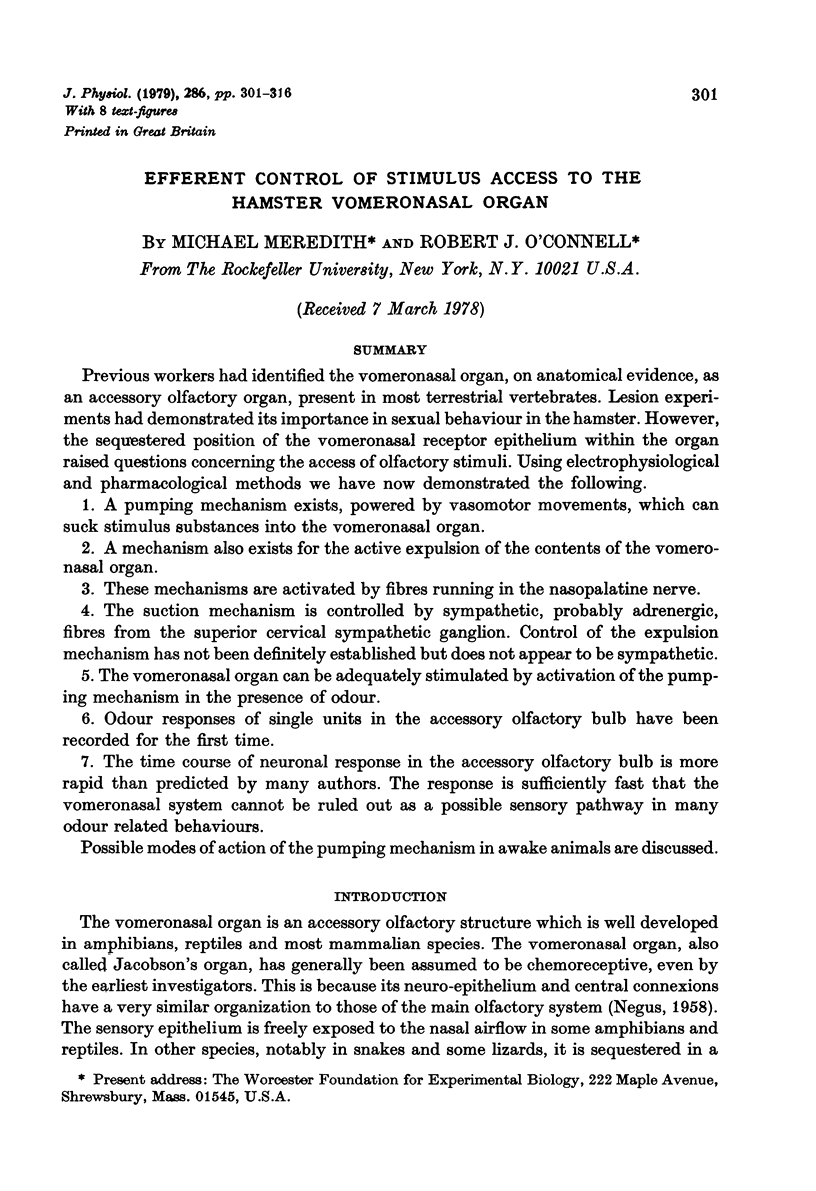
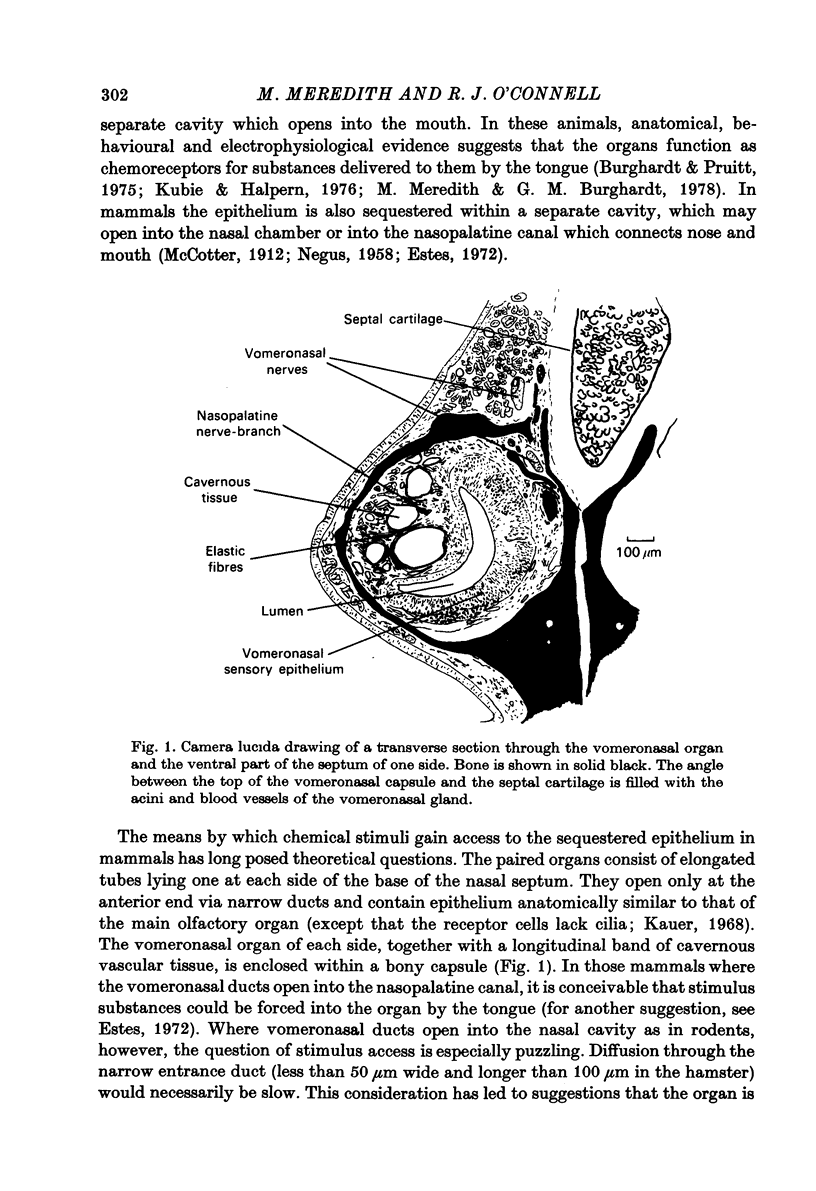

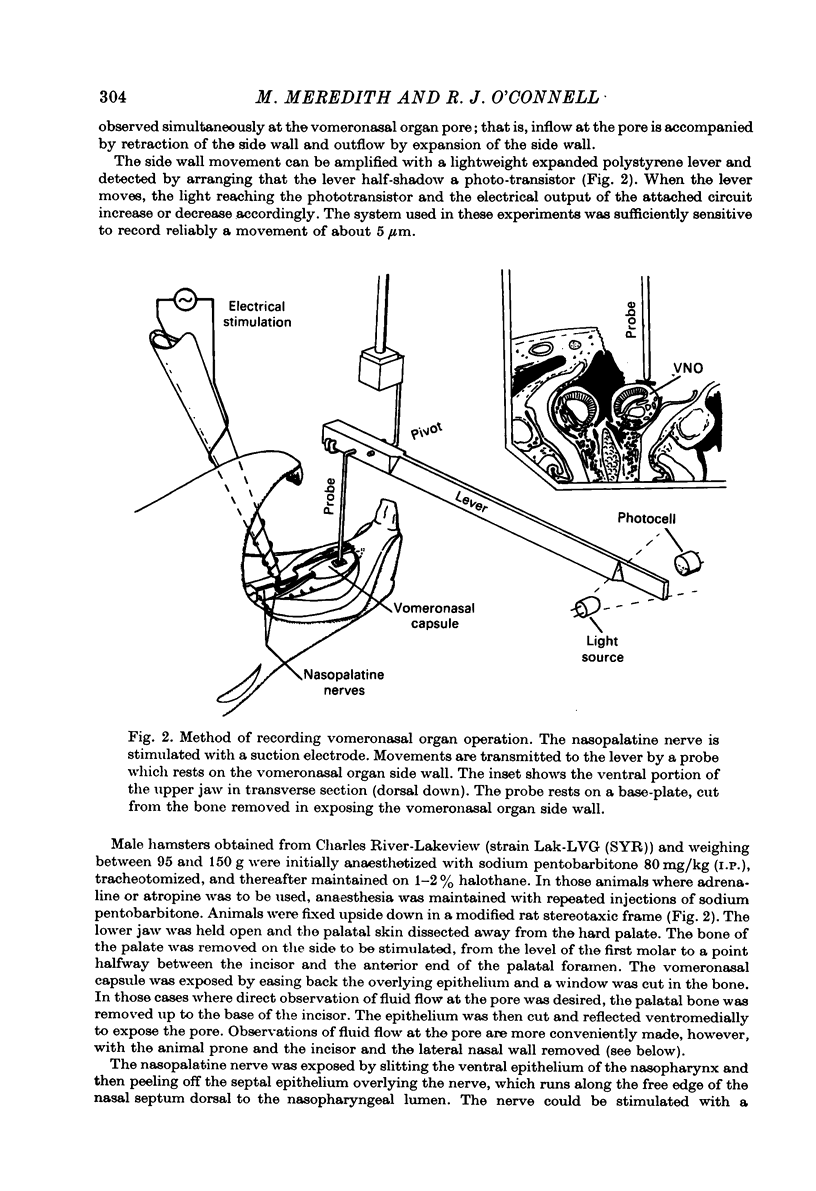
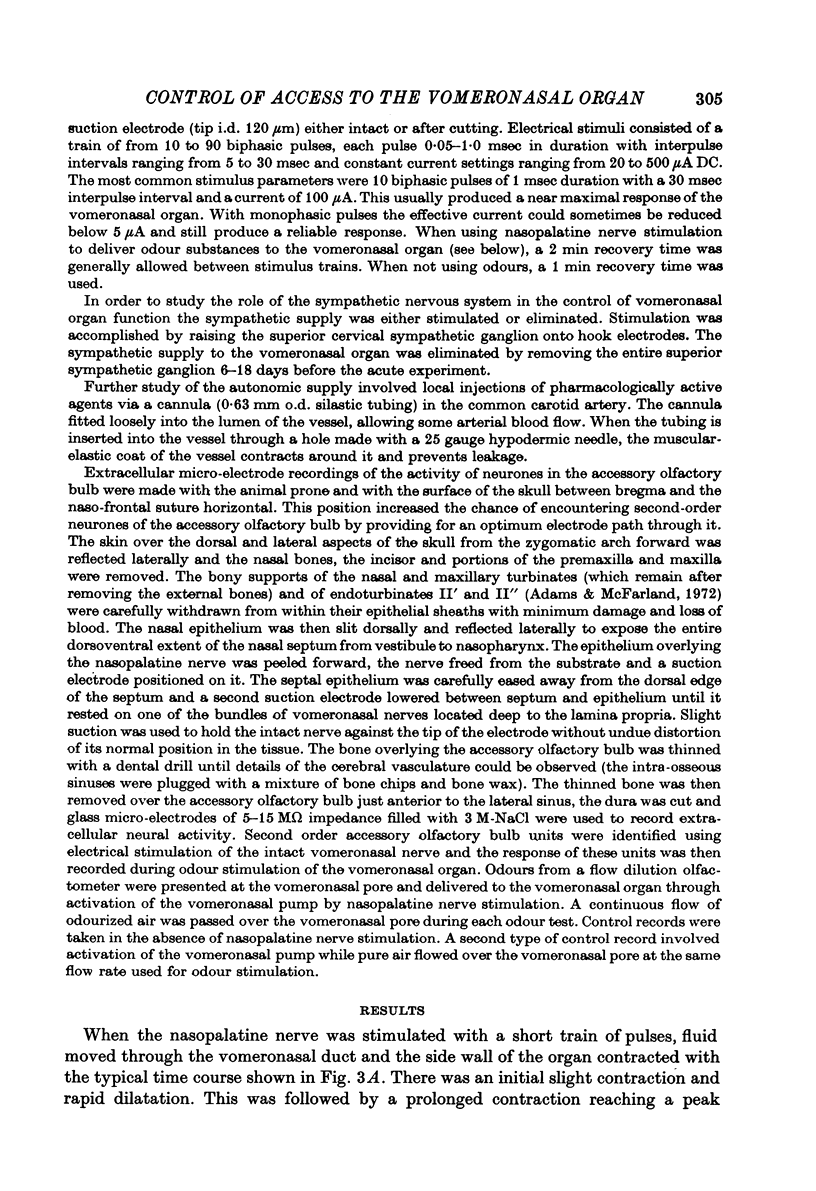
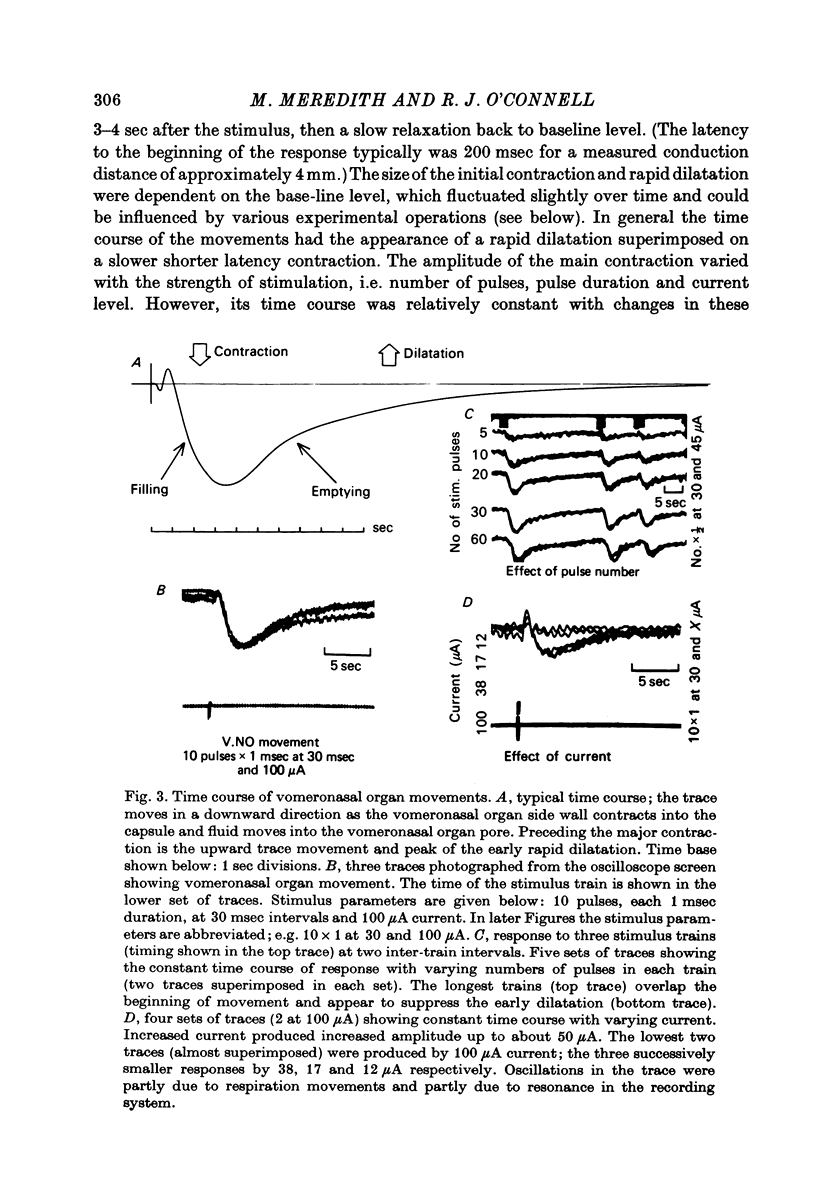
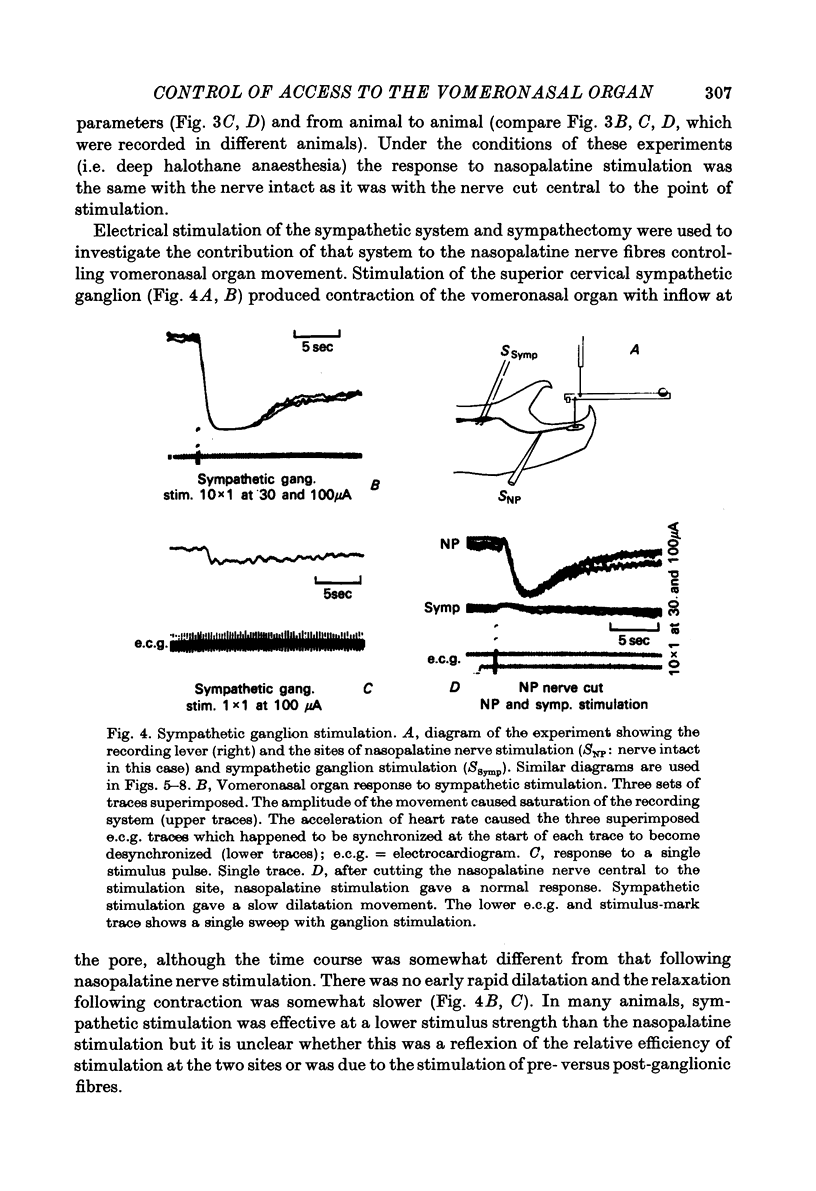
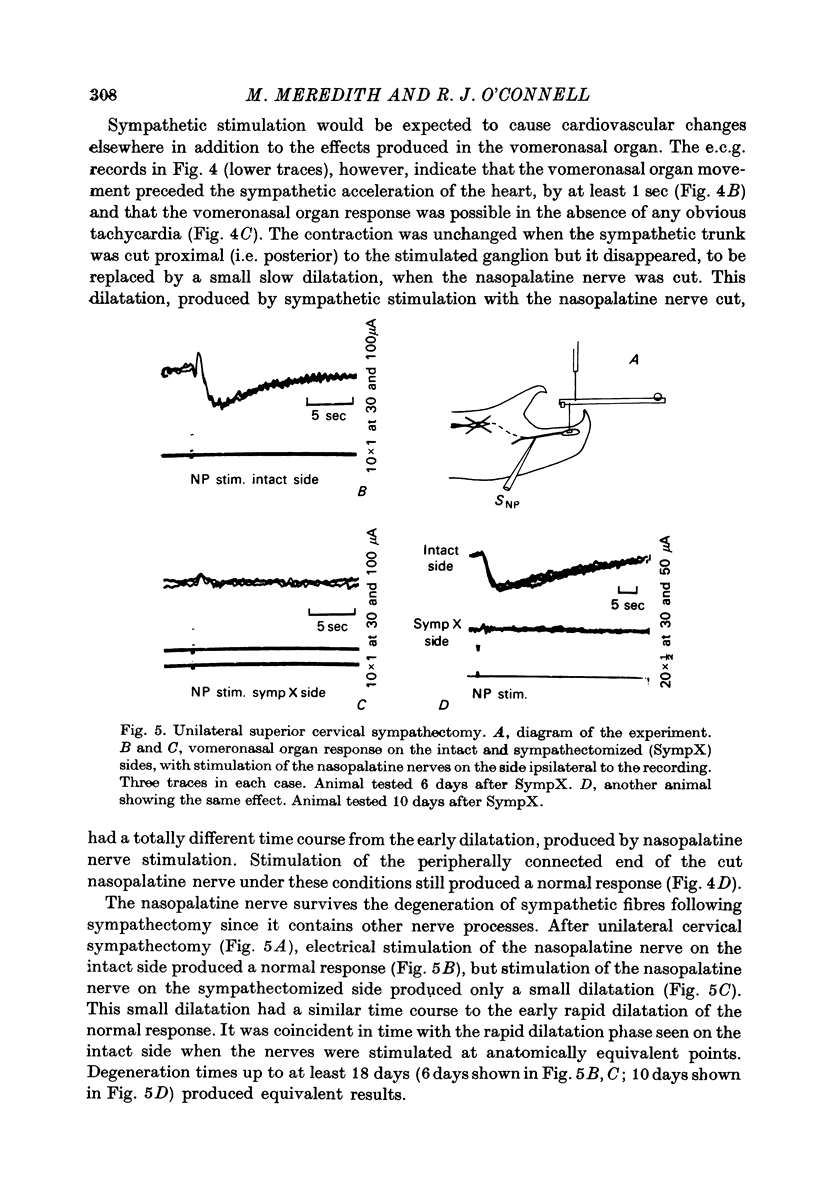
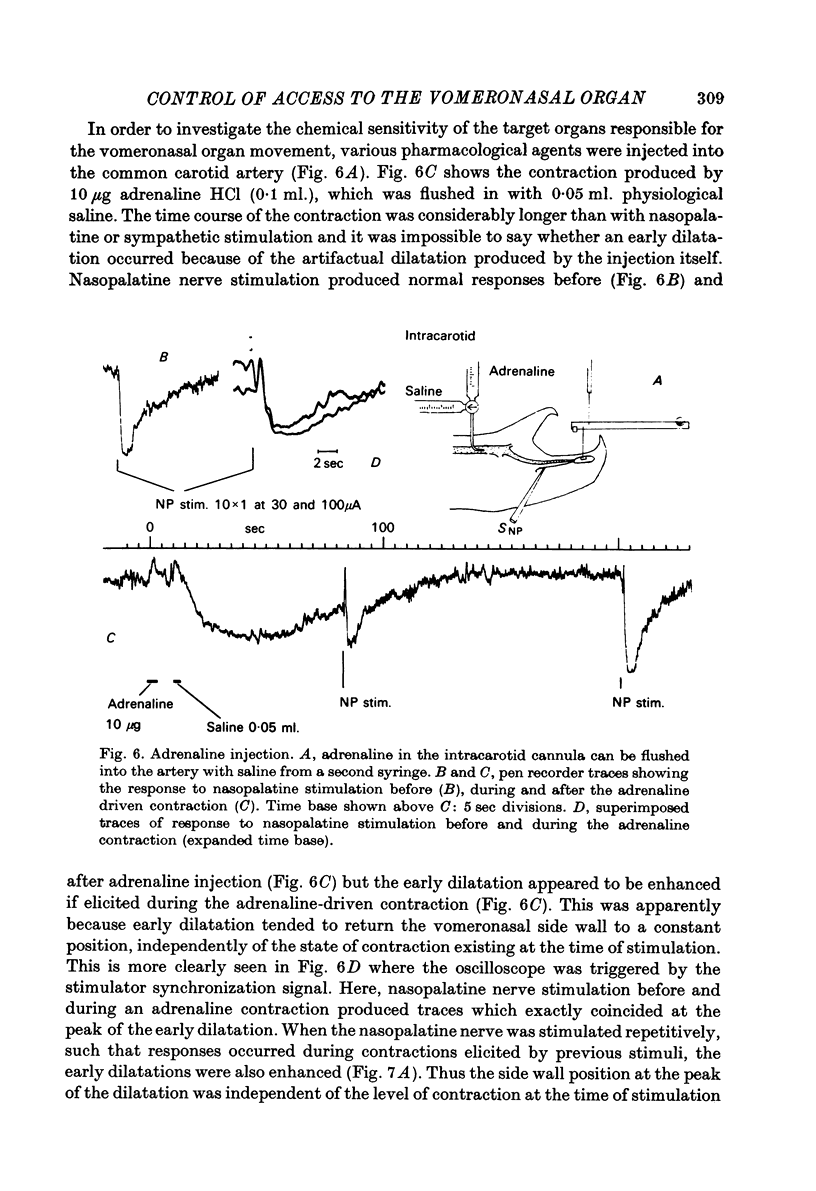
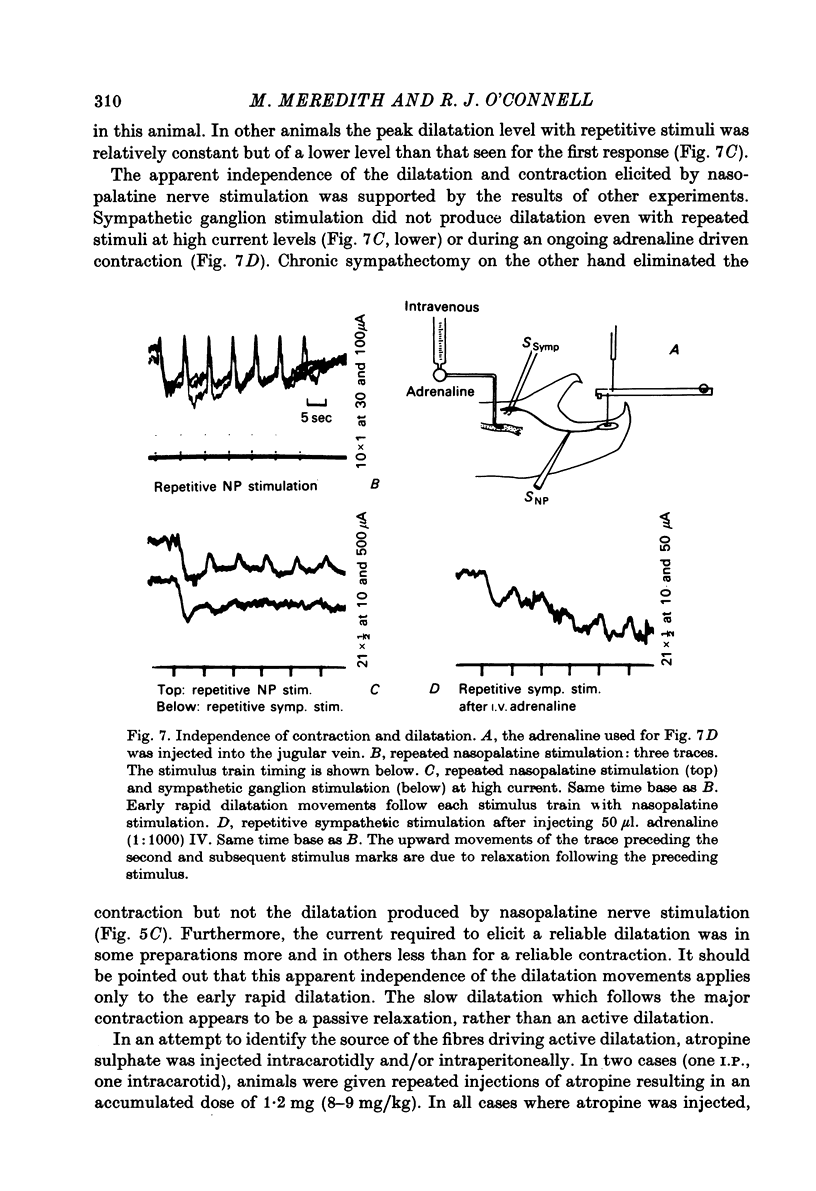
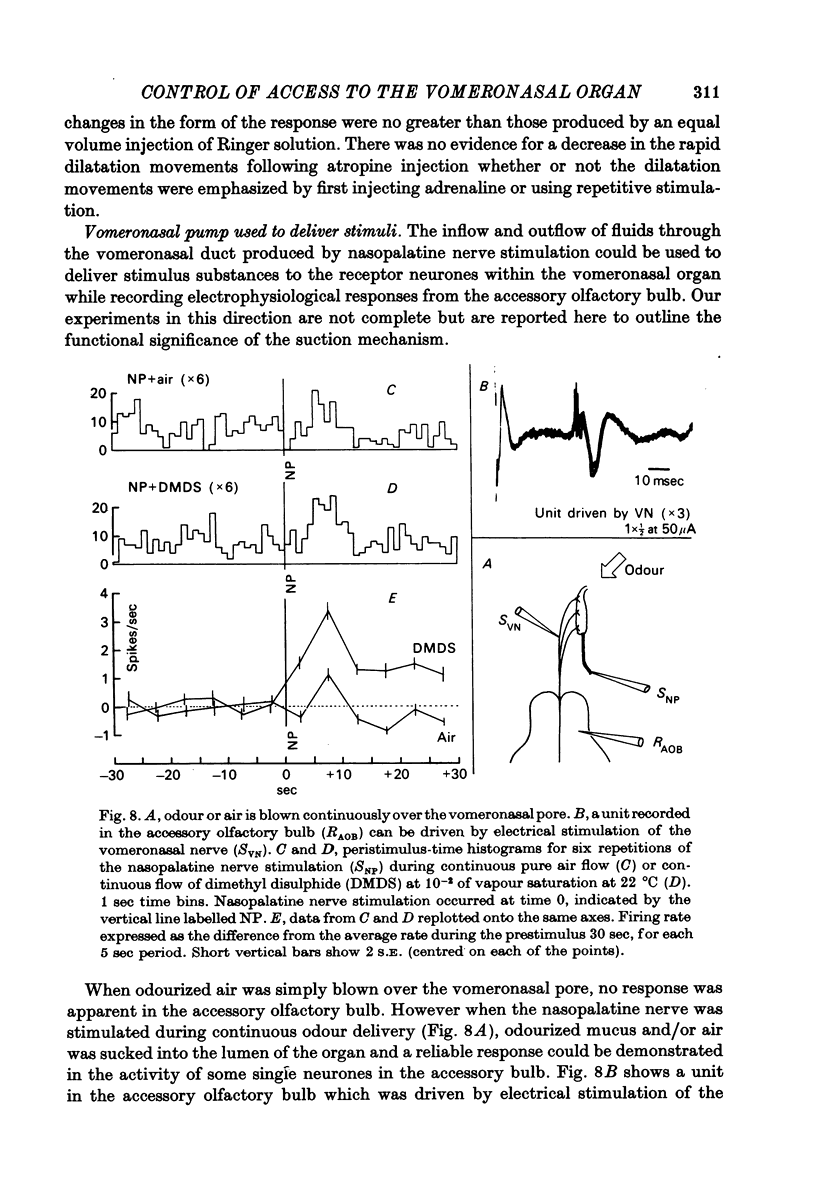
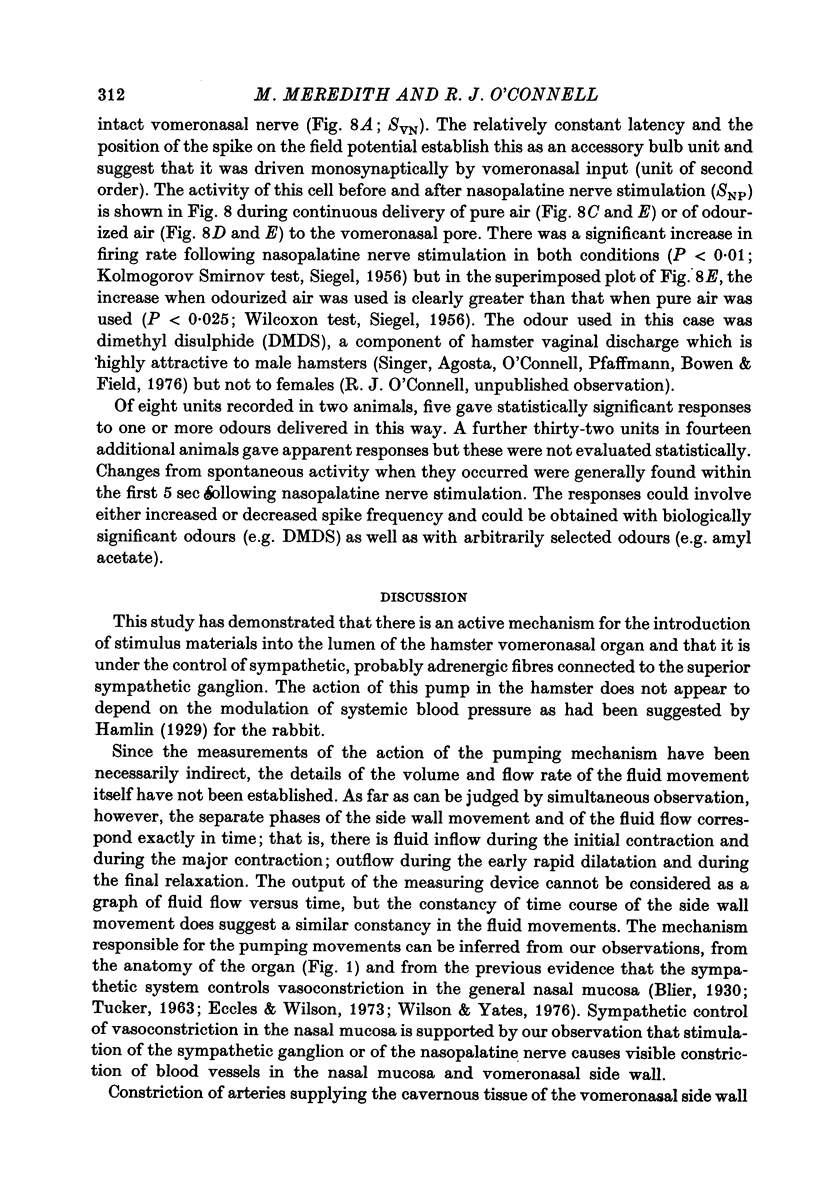
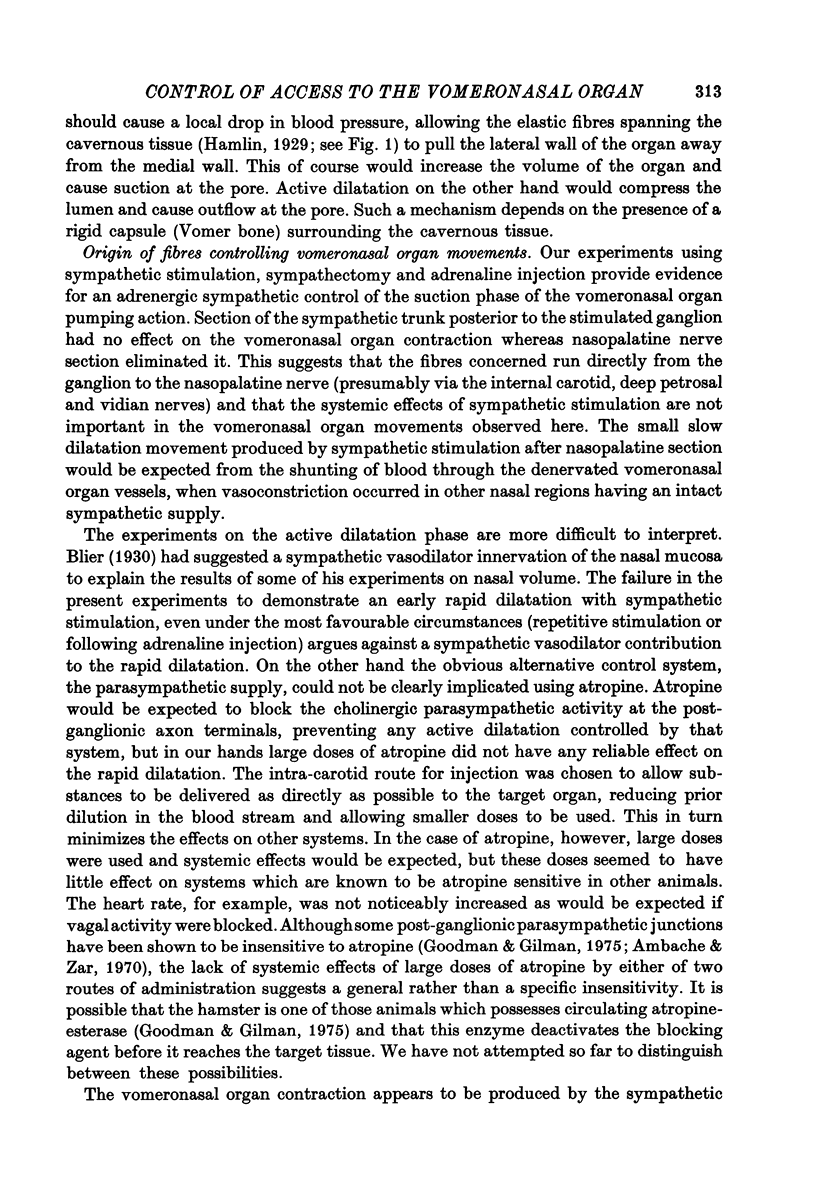
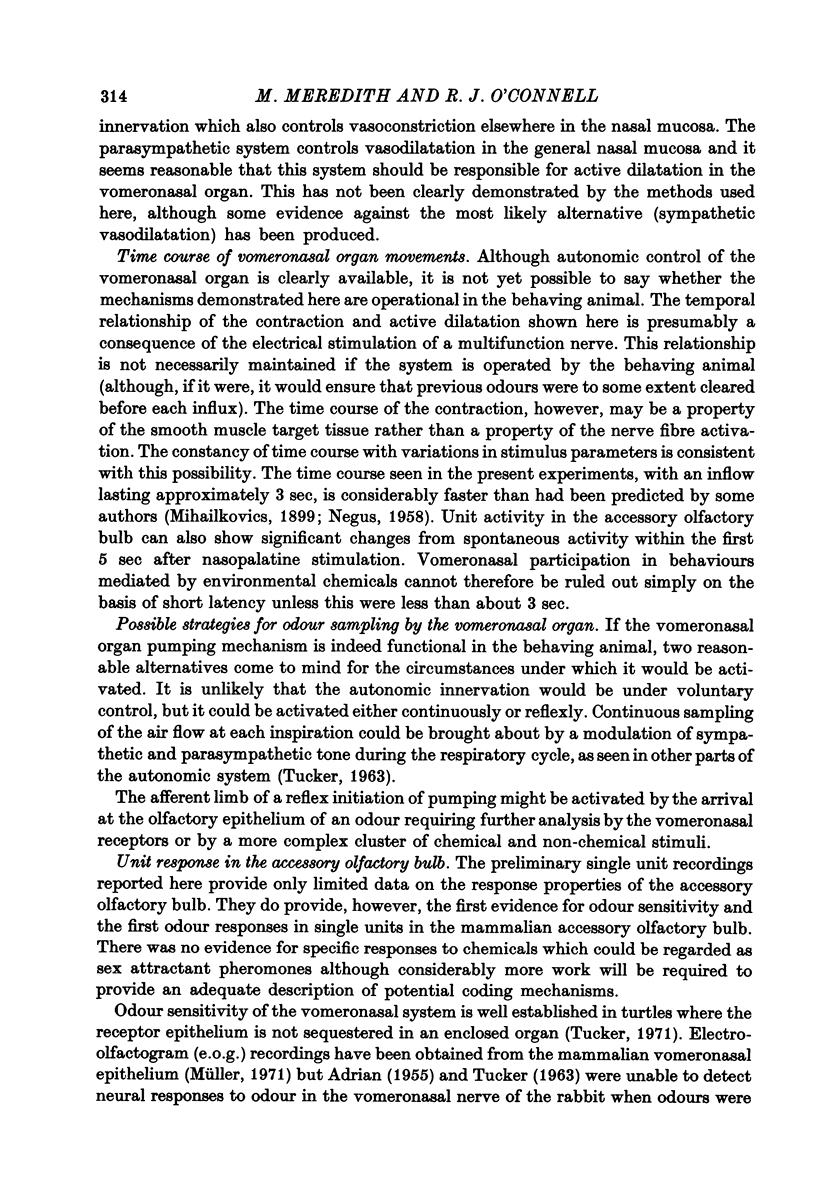
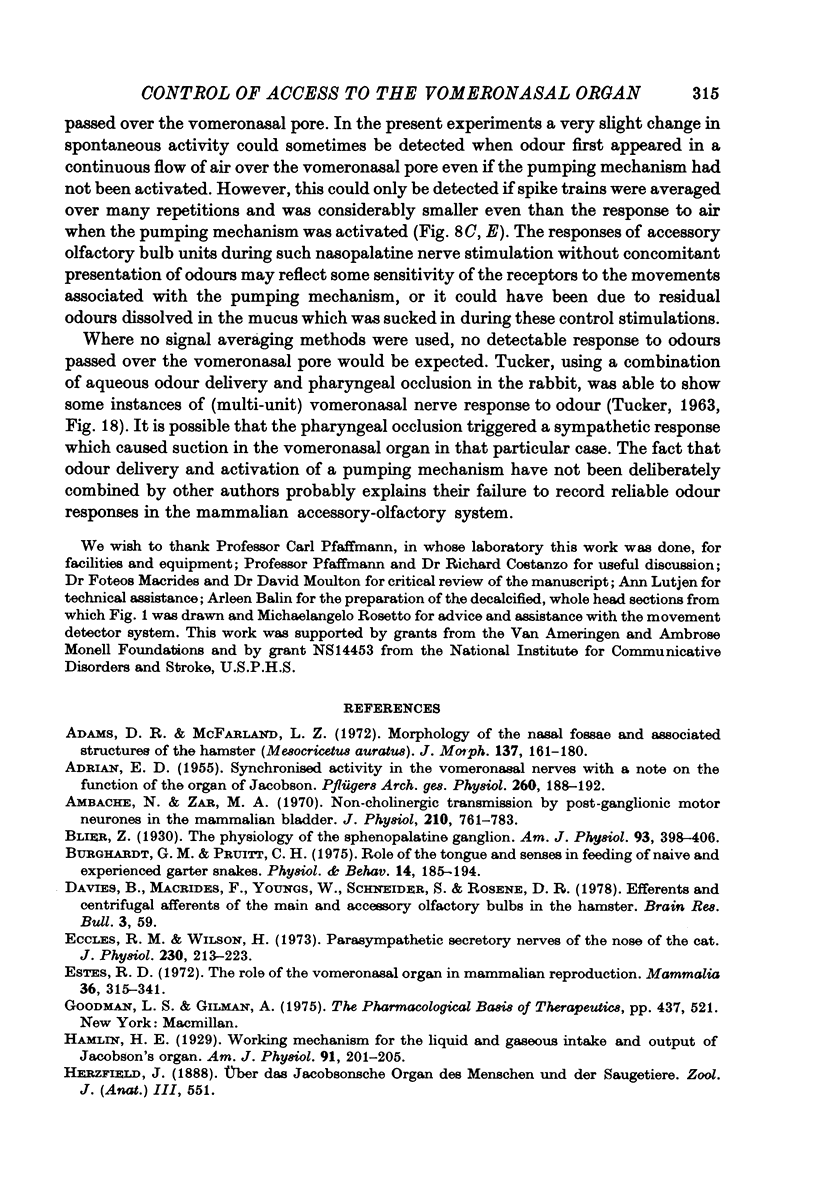
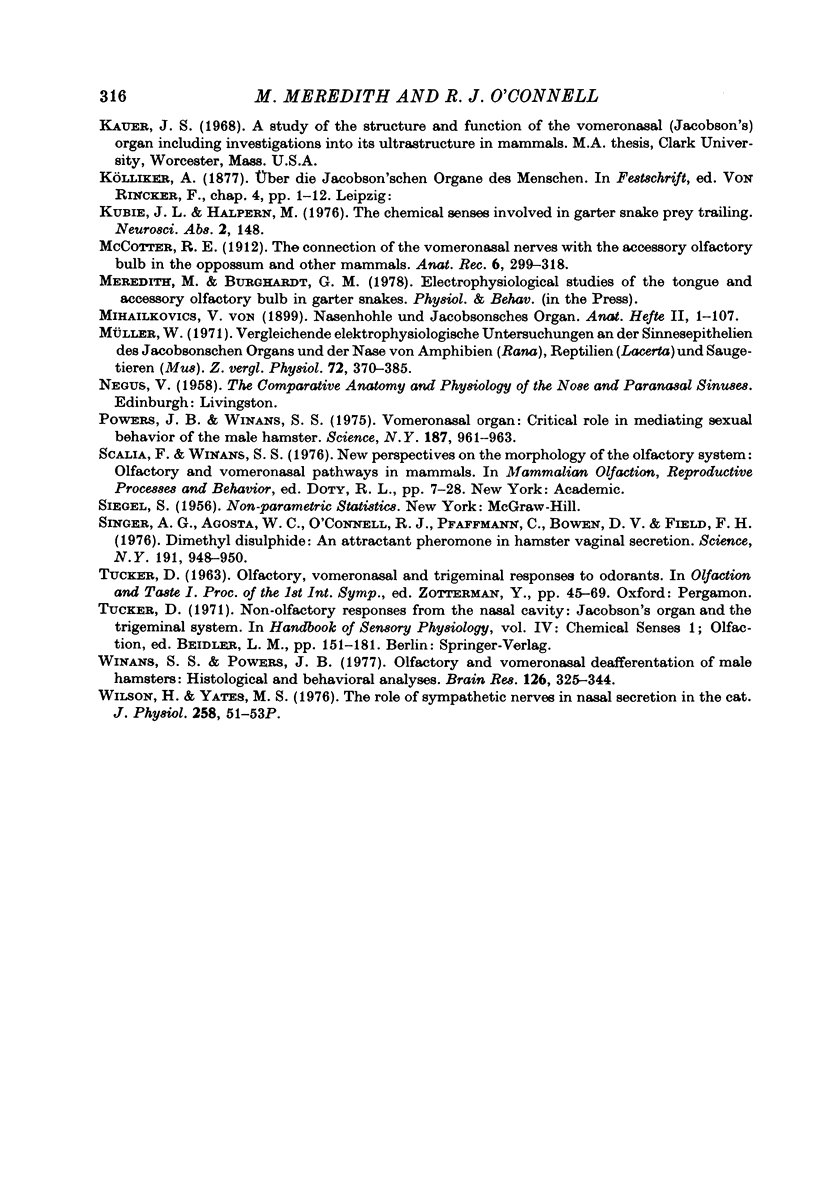
Selected References
These references are in PubMed. This may not be the complete list of references from this article.
- ADRIAN E. D. Synchronised activity in the vomero-nasal nerves with a note on the function of the organ of Jacobsen. Pflugers Arch. 1955;260(3):188–192. doi: 10.1007/BF00363383. [DOI] [PubMed] [Google Scholar]
- Adams D. R., McFarland L. Z. Morphology of the nasal fossae and associated structures of the hamster (Mesocricetus auratus). J Morphol. 1972 Jun;137(2):161–179. doi: 10.1002/jmor.1051370204. [DOI] [PubMed] [Google Scholar]
- Ambache N., Zar M. A. Non-cholinergic transmission by post-ganglionic motor neurones in the mammalian bladder. J Physiol. 1970 Oct;210(3):761–783. doi: 10.1113/jphysiol.1970.sp009240. [DOI] [PMC free article] [PubMed] [Google Scholar]
- Burghardt G. M., Pruitt C. H. Role of the tongue and senses in feeding of naive and experienced garter snakes. Physiol Behav. 1975 Feb;14(2):185–194. doi: 10.1016/0031-9384(75)90164-x. [DOI] [PubMed] [Google Scholar]
- Davis B. J., Macrides F., Youngs W. M., Schneider S. P., Rosene D. L. Efferents and centrifugal afferents of the main and accessory olfactory bulbs in the hamster. Brain Res Bull. 1978 Jan-Feb;3(1):59–72. doi: 10.1016/0361-9230(78)90062-x. [DOI] [PubMed] [Google Scholar]
- Eccles R., Wilson H. The parasympathetic secretory nerves of the nose of the cat. J Physiol. 1973 Apr;230(1):213–223. doi: 10.1113/jphysiol.1973.sp010184. [DOI] [PMC free article] [PubMed] [Google Scholar]
- Powers J. B., Winans S. S. Vomeronasal organ: critical role in mediating sexual behavior of the male hamster. Science. 1975 Mar 14;187(4180):961–963. doi: 10.1126/science.1145182. [DOI] [PubMed] [Google Scholar]
- Singer A. G., Agosta W. C., O'Connell R. J., Pfaffmann C., Bowen D. V., Field F. H. Dimethyl disulfide: an attractant pheromone in hamster vaginal secretion. Science. 1976 Mar 5;191(4230):948–950. doi: 10.1126/science.1251205. [DOI] [PubMed] [Google Scholar]
- Winans S. S., Powers J. B. Olfactory and vomeronasal deafferentation of male hamsters: histological and behavioral analyses. Brain Res. 1977 May 6;126(2):325–344. doi: 10.1016/0006-8993(77)90729-6. [DOI] [PubMed] [Google Scholar]


